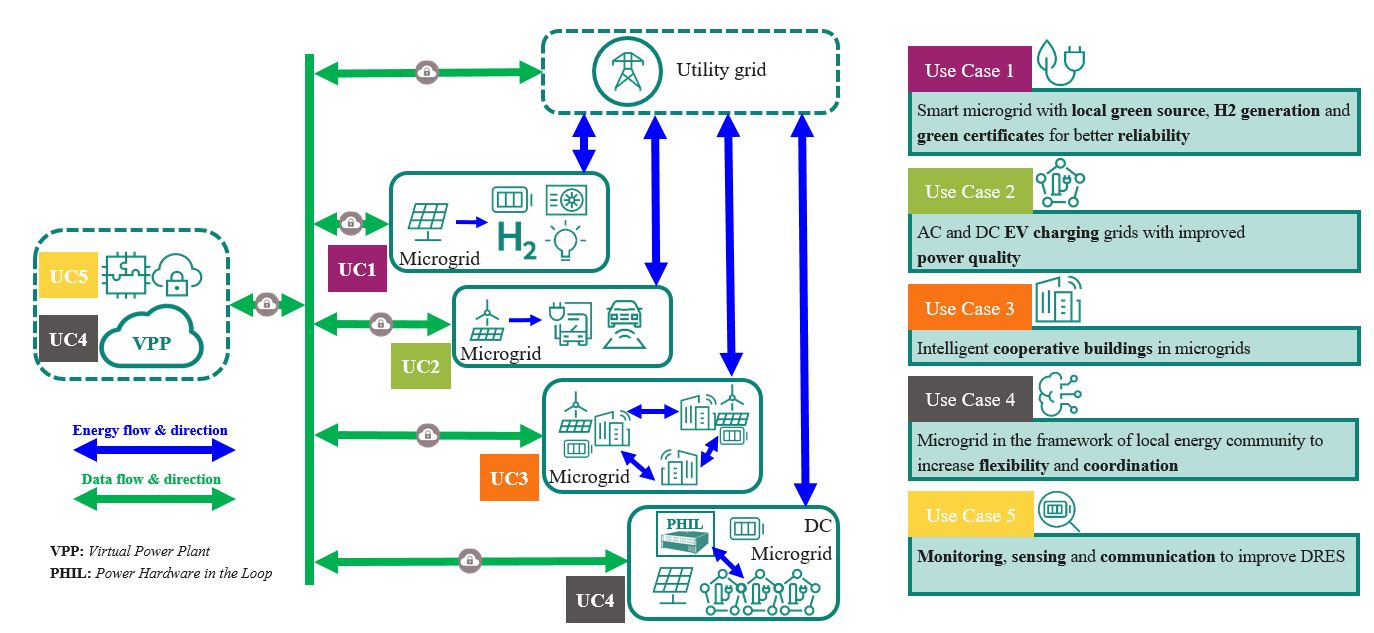ECS4DRES -
Electronic Components and Systems for flexible, coordinated and resilient Distributed Renewable Energy Systems
Laufzeit: 1.7.2024 - 30.6.2027
Externe Partner:
Infineon Technologies AG, Ingenics Digital Gmbh, Ceus UG, Friedrich
Alexander Universität Erlangen Nürnberg, Energy Web, Stichting Elaad
NL, Heliox BV, Greenflux Assets BV, Krachtwerk BV, Technische
Universiteit Eindhoven, Technische Universiteit Delft, Iquadrat
Informatica SL, Acondicionamiento Tarrasense Associacion, University of
Granada, Agencia Estatal Consejo Superior De Investigaciones
Científicas, Epic Power, Converters S.L., ST Microelectronics S.R.L.,
Enel X Way S.R.L., Politecnico di Bari, Consorzio Nazionale
Interuniversitario per la Nanoelettronica, Universita di Bologna,
Universita degli Studi di Padova, Universita di Pisa, Politecnico di
Torino, Universita degli Studi di Messina, University of Catania,
Longvision, High Performance Engineering Societa a Responsabilita
Limitata, Slovenska Technicka Univerzita V Bratislave, R-Das S.R.O.
Fördermittelgeber: EU, Bundesministerium für Wirtschaft und Klimaschutz, Förderkennzeichen: 16MEE0406
Projektmitarbeiter: Prof. Eberhard Waffenschmidt, Prof. Ingo Stadler
The aim is to enable the optimal utilisation of electrical
low-voltage distribution grids. To this end, controllable electrical
loads (electrically powered heat pumps, electric charging stations,
electrolysers) are to be optimally coordinated with each other.
Physical limits to the load capacity of the grid (transformer
utilisation, node voltages, line utilisation) are taken into account.
Requirements for the electrical loads described are also taken into
account:
- Each heat pump must be able to cover its given thermal demand at all times.
- The desired requirements for charging processes of electric vehicles
(desired charge level after charging and the desired time when the
charging process should be completed) should be taken into account. If
this is not possible due to the utilisation of the grid, "fair"
charging should be guaranteed so that no one is discriminated against.
- Electrolysers should provide demand response in order to utilise
local surpluses from fluctuating renewables such as photovoltaics
directly on site.
The data required for the optimisation described above is recorded by
smart meters and communicated between them. This communication is to
take place via 5G and in a decentralised manner, thus avoiding a single
point of failure.
The topology and status of the low-voltage grid can be reconstructed on
the basis of the recorded data. Based on this, the described
controllable loads can then be optimally coordinated.
To this end, appropriate algorithms are being developed and the
necessary hardware purchased and integrated into a laboratory
environment. Once the algorithms have been successfully tested in a
simulation environment, they will be tested on a laboratory scale.
Finally, the solutions developed will also be tested in a real
low-voltage distribution network. Stadtwerke Neuss has already been won
as a partner for this.
Verknüpftes Projekt> GridMaximizer
Links> Offizielle Projekt-Website
> Projekt-Website der TH-Köln
Thema
> Swarm Grid
> Elektromobilität
> PROGRESSUS
|

Structure of the project.
|